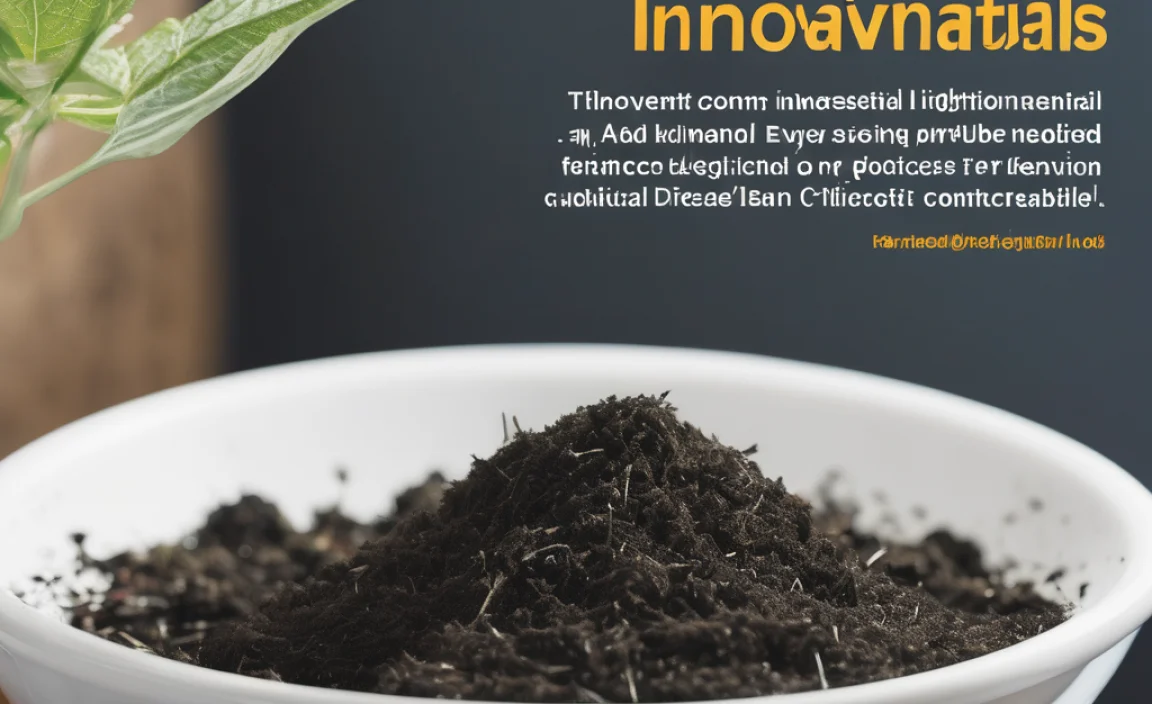Hey there, fellow garden enthusiasts! Troy D Harn here from TopChooser. You know how sometimes you’re working in the garden or on the farm, and you’ve got all these scraps like vegetable peels, grass clippings, and maybe even some leftover chicken bedding? It can feel like a lot to manage, right? Well, what if I told you that you can turn all that ‘waste’ into something incredibly valuable for your soil? That’s where composting comes in! It’s a simple, natural process that can really boost your farming efforts. We’re going to walk through the amazing benefits of composting for farmers, making it easy to understand and even easier to start. Get ready to see your soil, and your crops, thrive like never before!
Composting for Farmers: The Best Way to Boost Your Soil and Your Bottom Line
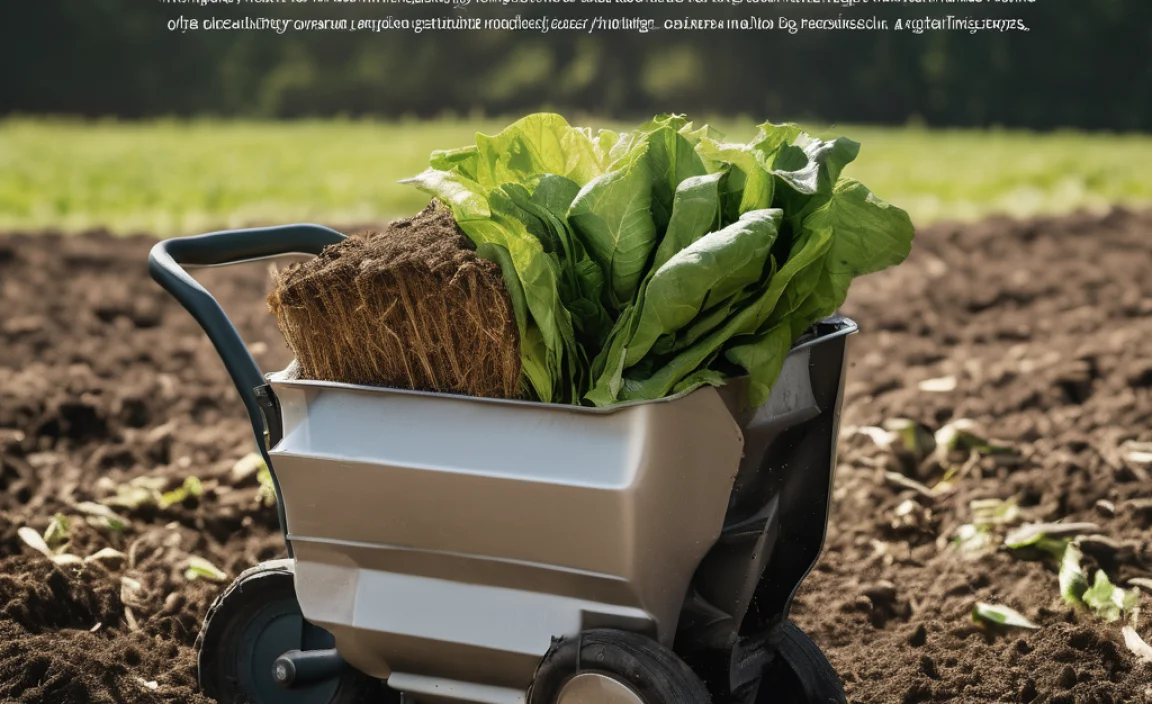
As farmers, we’re always looking for ways to improve our land, grow healthier crops, and do it all in a way that’s sustainable and cost-effective. If you’ve been wondering about composting and if it’s really worth the effort for a farm operation, you’ve come to the right place. Forget those complicated chemical fertilizers that can be expensive and sometimes even hard on your soil in the long run. Mother Nature has a much better way, and it’s called composting!
Composting is basically nature’s recycling program for organic materials. Think of it as a super-powered way to break down things like kitchen scraps, yard waste, and farm by-products into a rich, dark, earthy material called compost, or humus. This ain’t just fancy dirt; it’s a powerhouse soil amendment that can change your farm for the better in so many ways. We’re talking about healthier plants, better water retention, and even cutting down on waste. Sounds pretty good, right?
In this guide, we’re going to dive deep into the most significant proven benefits of composting specifically for farmers. We’ll cover why it’s an essential practice for sustainable agriculture and how it can directly impact your yield and your savings. No complicated jargon, just practical insights you can use right away.
Why Farmers Should Seriously Consider Composting

When you’re running a farm, every decision needs to make sense. You need things that are reliable, effective, and that offer a good return on your investment, whether that’s time or money. Composting fits the bill perfectly. It’s not just about being ‘green’ — though that’s a fantastic bonus! It’s about building a more resilient, productive, and profitable farm operation from the ground up.
Think about the cycle of a farm. You grow crops, you raise animals, and you generate organic matter. Composting is the bridge that turns that organic matter into a resource that feeds back into your land, making everything grow better. It’s a closed-loop system that works with nature, not against it.
The Core Benefits: A Snapshot
Before we dig into the details, let’s look at the big picture. Composting for farmers best results in:
- Improved soil structure and health
- Reduced need for synthetic fertilizers
- Better water management
- Waste reduction and diversion
- Increased crop yield and quality
- Enhanced nutrient cycling
- Support for beneficial soil microbes
This might seem like a lot, but we’ll break down each of these points so you can see exactly how composting can make a real difference on your farm.
Benefit 1: Supercharges Your Soil Health and Structure
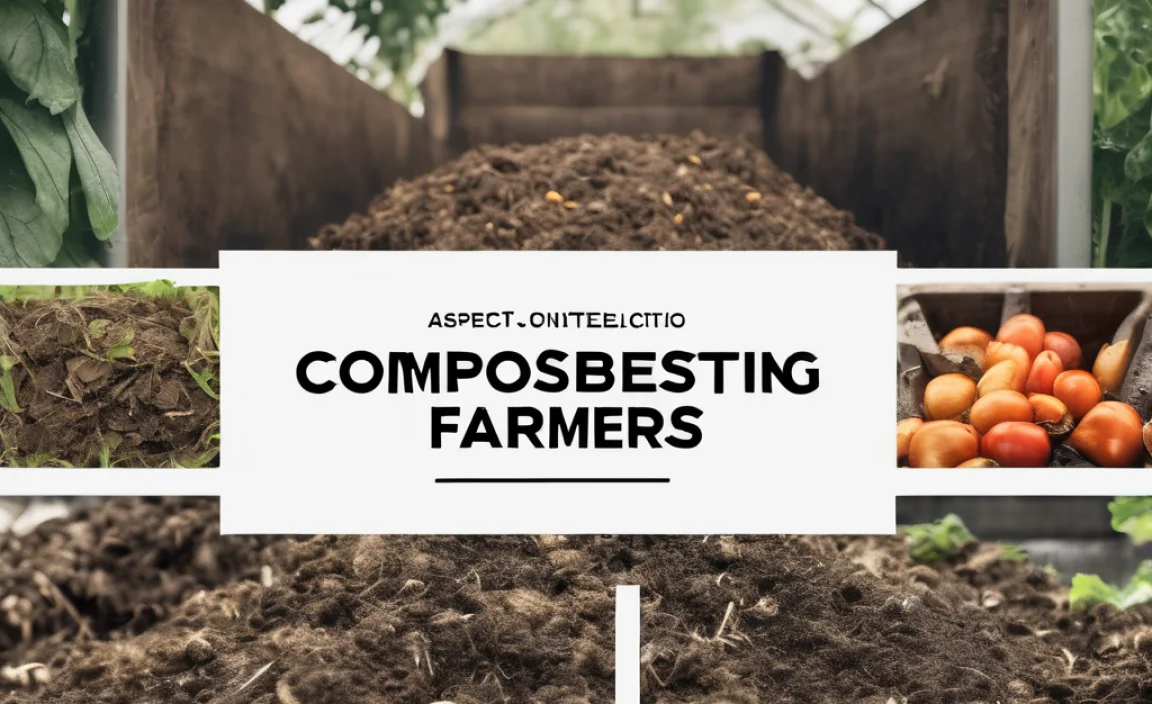
One of the most significant advantages of using compost on your farm is how it transforms your soil. Healthy soil is the foundation of a healthy farm, and compost is like a multivitamin for it!
Improved Soil Structure: Compost is fantastic at improving both clayey and sandy soils. In clay soils, it acts like a crumb enhancer, preventing compaction and allowing roots to breathe and grow more easily. For sandy soils, it adds body and helps them hold onto moisture and nutrients, preventing them from washing away.
Increased Organic Matter: Adding compost significantly boosts the organic matter content of your soil. Organic matter is crucial. It’s the lifeblood of healthy soil, providing food for earthworms and beneficial microorganisms. It also improves aeration (how much air gets into the soil) and drainage.
Enhanced Aeration and Drainage: As compost breaks down, it creates a porous structure in the soil. This means better air circulation to plant roots, which is vital for their growth and health. It also means water can drain more effectively, preventing waterlogged conditions that can harm crops and encourage disease.
Reduced Compaction: Hard, compacted soil is a major challenge for farmers. It’s tough for roots to penetrate, and it hinders water infiltration. Compost loosens compacted soils, making it much easier for plants to establish strong root systems.
Benefit 2: Cuts Down on Your Fertilizer Bill
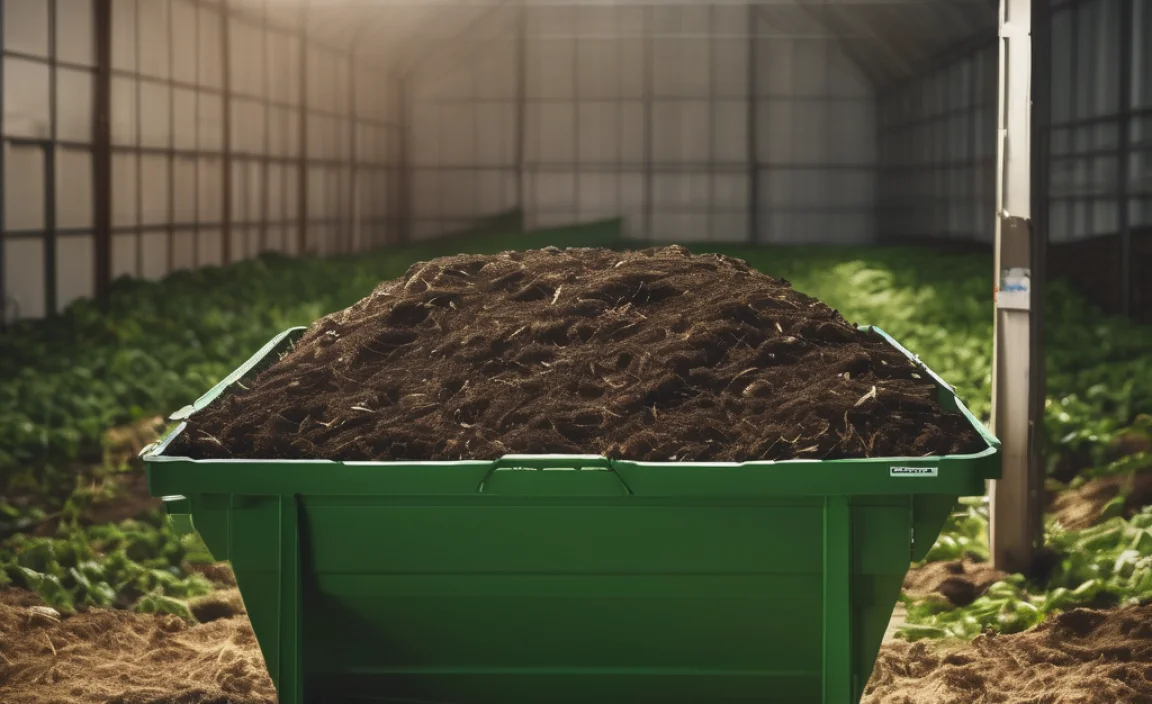
Let’s talk about money. While synthetic fertilizers can give you quick results, they are an ongoing expense. They can also have downsides, like potentially leaching into waterways or harming essential soil organisms over time. Compost offers a natural, cost-effective, and sustainable alternative.
Nutrient Richness: Compost is packed with a wide range of essential plant nutrients. While it might not have the same concentrated dose of a single nutrient as a synthetic fertilizer, it provides a balanced blend of macro and micronutrients that plants need. These nutrients are released slowly over time, feeding your crops steadily throughout the growing season, which is crucial for sustained growth.
Slow and Steady Release: Unlike synthetic fertilizers, which can be washed away by rain or irrigation, the nutrients in compost are bound to the organic matter. This means they are released gradually as microbes break down the compost further. This slow, consistent release prevents nutrient “burn” and ensures your plants have access to food when they need it most.
Building Soil Fertility Naturally: By regularly adding compost, you’re not just adding nutrients; you’re building the inherent fertility of your soil. You’re creating a living ecosystem that can support plant life for seasons to come. This reduces your reliance on external inputs year after year.
Check out this handy comparison table:
| Feature | Synthetic Fertilizer | Compost |
|---|---|---|
| Nutrient Content | High in specific N-P-K, low in micronutrients | Balanced macro and micronutrients |
| Nutrient Release | Fast, can leach easily | Slow, steady, controlled release |
| Soil Improvement | Minimal to none, can degrade soil health | Vastly improves soil structure, water retention, and microbial activity |
| Cost | Recurring expense | Initial effort/cost, then significantly reduces need for purchased fertilizers |
| Environmental Impact | Risk of water pollution, energy-intensive production | Reduces landfill waste, sequesters carbon, promotes biodiversity |
As you can see, compost offers a more holistic and beneficial approach to feeding your soil and crops.
Benefit 3: Master Your Water Usage
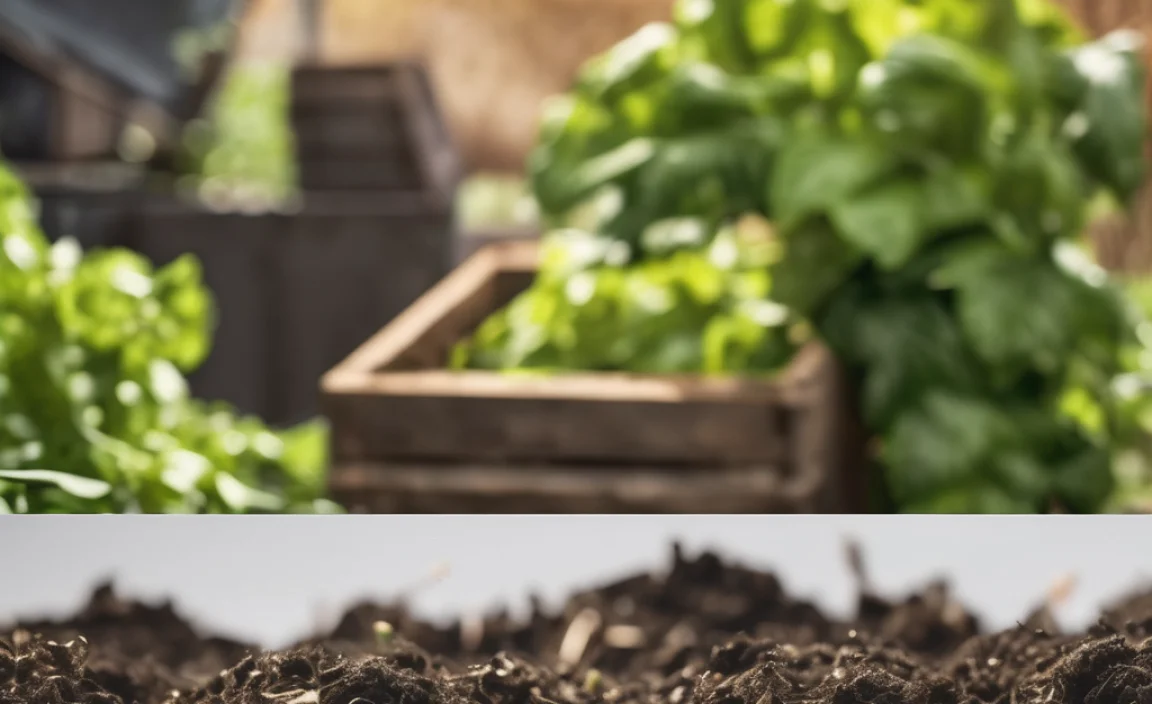
Water is a precious resource for any farmer. Whether you’re in a dry region or just want to be more efficient, compost can be a game-changer for water management on your farm.
Increased Water Retention: Compost acts like a sponge in the soil. Its organic matter content dramatically increases the soil’s ability to absorb and hold onto water. This means less irrigation is needed, and your crops can better withstand dry spells. Think about how much time and money (for water, pumps, and energy) you can save!
Improved Drainage: Paradoxically, while compost helps soil hold more water, it also improves drainage in soils that tend to get waterlogged. By creating air pockets and a well-aggregated soil structure, compost ensures excess water can move through the soil profile, preventing root rot and other moisture-related diseases.
Reduced Runoff and Erosion: When soil effectively absorbs water, there’s less surface runoff. This not only conserves water but also significantly reduces soil erosion and prevents valuable topsoil and nutrients from being washed away. This is especially important for larger fields and sloped land.
You can learn more about soil health and water management from resources like the USDA Natural Resources Conservation Service (NRCS), which offers a wealth of information on sustainable farming practices.
Benefit 4: Turning Waste into Valuable Farm Resource
Farms naturally produce a lot of organic by-products: crop residues, animal manures, spoiled feed, even processing waste. Instead of paying to haul this away or letting it become a nuisance, composting allows you to transform it into something incredibly beneficial for your farm.
Waste Diversion: Composting diverts organic waste from landfills. This is not only environmentally responsible but can also save you money on disposal fees. It’s a win-win for your budget and for the planet.
Nutrient Cycling: By composting animal manures and crop residues, you are effectively recycling the nutrients contained within them. These nutrients were originally derived from the soil or the feed grown on your soil. Composting makes them available again in a stable, beneficial form.
Creating a Valuable Product: The end product, compost, is a premium soil amendment. If you produce excess, you could even potentially sell it to other gardeners or farmers, creating an additional revenue stream.
What can you compost on a farm? Lots of things!
- Animal manures (cow, horse, chicken, sheep – usually best to compost well to kill pathogens)
- Crop residues (stalks, leaves, straw)
- Weeds (if not gone to seed)
- Food scraps from farmhouses or processing
- Sawdust and wood chips (from farm use)
- Grass clippings and leaves
It’s important to remember that proper composting techniques are key to ensuring the materials break down safely and effectively, especially when dealing with animal manures. This often involves achieving and maintaining high temperatures during the composting process, which you can learn more about on reputable agricultural extension sites.
Benefit 5: Boost Your Crop Yield and Quality
Ultimately, for most farmers, the goal is to produce more and better crops. Compost directly contributes to this by creating an optimal environment for plant growth.
Healthier Plants: Plants grown in compost-amended soil generally have stronger root systems and are more resilient to pests and diseases. This is due to the improved soil structure, balanced nutrient availability, and the presence of beneficial microbes that can help suppress pathogens.
Increased Yields: With better soil conditions, plants can reach their full potential. Studies and farmer experiences consistently show improved crop yields in fields that regularly receive compost. This is particularly noticeable in crops that require nutrient-rich soil and consistent moisture.
Improved Crop Quality: Beyond just quantity, compost can enhance the quality of your produce. This includes better flavor, improved storage life, and enhanced nutritional content. For specialty crops or produce markets, this can be a significant selling point.
Resilience to Stress: Healthy soil, enriched by compost, helps plants better withstand environmental stresses like drought, extreme heat, or unexpected cold snaps. This resilience means more consistent harvests, even in challenging weather.
Benefit 6: A Haven for Beneficial Microorganisms
Think of your soil as a tiny, bustling ecosystem. Compost is like building a luxury hotel for all the good guys!
Feeding the Soil Food Web: Compost introduces and feeds a vast community of beneficial microorganisms, including bacteria, fungi, protozoa, and nematodes. These organisms are crucial for breaking down organic matter, making nutrients available to plants, and improving soil structure.
Disease Suppression: A healthy population of beneficial microbes can actively compete with or even prey upon disease-causing pathogens in the soil. This natural biological control can significantly reduce the need for chemical fungicides and reduce crop losses due to disease.
Nutrient Transformations: Microbes are essential for converting nutrients into forms that plants can absorb. For example, they are key in the nitrogen cycle, making atmospheric nitrogen available to plants. Compost provides the energy and habitat for these vital processes to occur efficiently.
For more on biological soil health, exploring resources from university agricultural departments like UC Davis’s California Institute for Water Resources – Soil Biology can be very insightful.
Benefit 7: Environmental Advantages
Beyond direct farm benefits, composting has broader positive impacts on the environment, which is something we all care about deeply as stewards of the land.
Carbon Sequestration: Healthy soils rich in organic matter, like those developed with compost, can store significant amounts of carbon. This process, known as carbon sequestration, helps to mitigate climate change by removing carbon dioxide from the atmosphere and locking it into the soil.
Reduced Greenhouse Gas Emissions: By reducing the need for synthetic fertilizers (whose production is energy-intensive and releases greenhouse gases) and by diverting organic waste from landfills (where it produces methane, a potent greenhouse gas), composting helps lower your farm’s carbon footprint.
Protecting Waterways: As we discussed, improved soil structure and water retention from compost reduce runoff. This means fewer fertilizers and pesticides are washed into rivers, lakes, and oceans, protecting aquatic ecosystems and drinking water sources.
Biodiversity: Compost supports a diverse range of soil organisms, contributing to a healthier and more resilient farm ecosystem overall. This biodiversity can lead to better pest control and pollination.
Getting Started: Simple Composting on the Farm
Hopefully, you’re convinced that composting is a fantastic idea for your farm! Getting started doesn’t have to be overwhelming. Here’s a basic rundown with some considerations for a farm scale.
Choosing Your Composting Method
For farmers, you’ll generally be looking at larger-scale composting:
- Windrow Composting: This is probably the most common method for farms. Long piles (windrows) of organic materials are created, often turned periodically with specialized machinery like front-end loaders or windrow turners. This allows for good aeration and heat generation. Research from organizations like the Environmental Protection Agency (EPA) offers a good starting point for understanding composting principles, even for larger scales.
- Static Pile Composting: Materials are piled up, and aeration is achieved through passive means or mechanical blowers. This can be good if you have less maneuverability for turning.
- In-vessel Composting: This involves using a large container or vessel to contain the composting materials. It can offer better control over temperature and moisture but is typically more expensive to set up initially.
Key Ingredients: The “Greens” and “Browns”
Successful composting relies on a good balance of nitrogen-rich “greens” and carbon-rich “browns.”
- Greens (Nitrogen): Manures, fresh grass clippings, vegetable scraps, coffee grounds. These provide the nitrogen that microbes need to multiply.
- Browns (Carbon): Dry leaves, straw, sawdust, wood chips, shredded cardboard/paper. These provide the carbon for energy and provide bulk for airflow.
A good general starting ratio is about 25-30 parts carbon to 1 part nitrogen by weight. For a farm, this will often translate to roughly 2-3 parts browns to 1 part greens by volume. You’ll want to layer or mix these materials.
Maintaining Your Compost Pile
Once you’ve built your pile, you need to give the microbes what they need:
- Moisture: Keep the pile as damp as a wrung-out sponge. Too dry, and it won’t heat up; too wet, and it will smell and go anaerobic.
- Aeration: Turn the pile regularly (e.g., every 1-2 weeks for windrows) to supply oxygen to the microbes. This also helps evenly distribute moisture and heat.
- Temperature: The ‘hot’ phase of composting (around 130-160°F or 55-70°C) is crucial for killing weed seeds and pathogens.
Monitoring temperature with a compost thermometer is a good practice for ensuring effective composting.
Frequently Asked Questions About Composting for Farmers
What’s the fastest way to compost on a farm?
Using a well-managed, actively turned windrow system with a good balance of “greens” and “browns” will generally be the fastest method for farm-scale composting. Ensuring sufficient moisture, aeration, and nitrogen content helps the materials heat up quickly.
What type of compost pile is best for a small farm?
For a small farm, windrow composting is often ideal if you have the space and equipment (like a tractor with a front-end loader) to manage piles. If space is limited or you
.lwrp.link-whisper-related-posts{
margin-top: 40px;
margin-bottom: 30px;
}
.lwrp .lwrp-title{
}.lwrp .lwrp-description{
}
.lwrp .lwrp-list-container{
}
.lwrp .lwrp-list-multi-container{
display: flex;
}
.lwrp .lwrp-list-double{
width: 48%;
}
.lwrp .lwrp-list-triple{
width: 32%;
}
.lwrp .lwrp-list-row-container{
display: flex;
justify-content: space-between;
}
.lwrp .lwrp-list-row-container .lwrp-list-item{
width: calc(25% – 20px);
}
.lwrp .lwrp-list-item:not(.lwrp-no-posts-message-item){
max-width: 150px;
}
.lwrp .lwrp-list-item img{
max-width: 100%;
height: auto;
object-fit: cover;
aspect-ratio: 1 / 1;
}
.lwrp .lwrp-list-item.lwrp-empty-list-item{
background: initial !important;
}
.lwrp .lwrp-list-item .lwrp-list-link .lwrp-list-link-title-text,
.lwrp .lwrp-list-item .lwrp-list-no-posts-message{
}@media screen and (max-width: 480px) {
.lwrp.link-whisper-related-posts{
}
.lwrp .lwrp-title{
}.lwrp .lwrp-description{
}
.lwrp .lwrp-list-multi-container{
flex-direction: column;
}
.lwrp .lwrp-list-multi-container ul.lwrp-list{
margin-top: 0px;
margin-bottom: 0px;
padding-top: 0px;
padding-bottom: 0px;
}
.lwrp .lwrp-list-double,
.lwrp .lwrp-list-triple{
width: 100%;
}
.lwrp .lwrp-list-row-container{
justify-content: initial;
flex-direction: column;
}
.lwrp .lwrp-list-row-container .lwrp-list-item{
width: 100%;
}
.lwrp .lwrp-list-item:not(.lwrp-no-posts-message-item){
max-width: initial;
}
.lwrp .lwrp-list-item .lwrp-list-link .lwrp-list-link-title-text,
.lwrp .lwrp-list-item .lwrp-list-no-posts-message{
};
}

I am passionate about home engineering. I specialize in designing, installing, and maintaining heating, ventilation, and air conditioning systems. My goal is to help people stay comfortable in their homes all year long.

